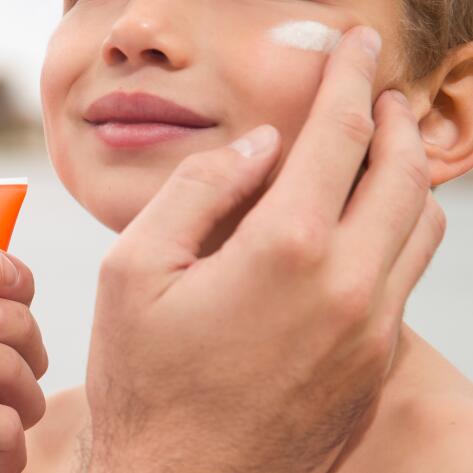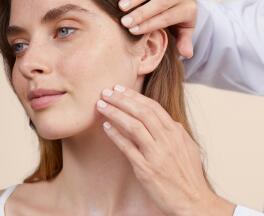Protecting your children's skin

Children's skin is more fragile
But why do children react differently in the sun?
• In children, the top layer of the epidermis is thinner than in adults, making it more vulnerable to sun-induced cell damage
• Children are still growing. Their bodies haven’t yet developed much resistance to the sun and their skin is immature, with a pigmentation system that’s still developing
• Their skin is very reactive to the products they use. They need sun protection adapted to their age and sensitive skin
Children: vulnerable targets in the sun
Children are vulnerable targets when out in the sun. Firstly, they are more exposed to the sun by their lifestyle, and their skin is also more fragile.
Sun-exposed lifestyle
At school, in the playground, at the weekend in the park, at the beach on holiday... Your children are exposed to the sun very often, spending an average of 10 hours a week outside when they are at school.
Their still fragile skin is more likely to be damaged by the sun if not properly protected, making them more susceptible.

From birth, 50-80% of our ability to resist sun damage out of the total sun exposure we’ll experience in our lifetime is used up before the age of 18. Beware the butterfly effect when it comes to the sun: a sunburn in childhood can lead to skin cancer years later in adulthood.
Be careful: no sun for babies
Newborn age is when sunburn is most dangerous. There are several reasons for this:
• the skin is still fragile,
• the infant doesn’t yet know how to regulate their body temperature
• sunburn can affect the whole physiology
• there is a risk of dehydration or hyperthermia (increased body temperature).
A baby under one year of age should never be left in the sun, even for a short period of time. Fifteen minutes in the shade under a parasol is enough to give your baby the vitamin D they need to grow and develop strong bones.
The right steps for protecting yourself from the harmful effects of the sun
It's never too early to teach your children good sun exposure practices. Knowing (and respecting) the rules of sun exposure is the only way to enjoy the sun safely.
Consider the time of day you're out in the sun
“When can I go and play in the sun with my friends?" Even if your child is growing impatient, it’s very important to avoid the hours of maximum sunlight between 11am and 4pm, when the sun is at its peak in the sky and its UV rays are most dangerous - especially at the beach, where the sand reflects the sun. Whether you distract them with a colouring session or a nap, it’s up to you to find alternative activities!
Protect your child with clothing
Clothes are one of the best ways to protect children from the sun while on the move. Look for long sleeves, tops that cover the shoulders, trousers and wide-brimmed hats.
Protect your child's eyes
As with their skin, children's eyes have not matured and are particularly sensitive to radiation. This is why it's recommended that you equip your child with certified UVA protection glasses that are adapted to the shape of their face. The earlier you get your child used to wearing glasses, the easier it will be for them to put up with them!
Apply good sun protection
It’s important to regularly and generously apply sun cream with at least SPF 50 to children's skin, and reapply it at least every two hours - especially as there are plenty of opportunities for them to remove their protective cream: swimming, playing, sweating, to name a few favourites. Today's children are tomorrow's adults, so it’s important to teach them good sun protection practices from a very early age.
Make sure your child stays hydrated
Children might not always think about staying hydrated when running around and playing hide-and-seek in the open air. It’s very important that your child drinks plenty of water when out in the sun to avoid dehydration.
No direct sun exposure
If possible, choose activities in the shade and avoid direct exposure to the sun. So you can enjoy the beach, of course, but bring a parasol! But be careful: shade doesn’t mean zero protection! Be aware of indirect UV radiation.

Let's face it, kids aren't exactly fans of sun cream.
Here are some tips to help:
- Apply sun cream to the body first and end with the face. Make applying sun cream fun!
- Put the necessary amount (for example, 2 drops for the arm*) in the palm of your hand.
- Ask your child to take a small amount with their fingertips and apply it in little dots to their face and body so they look like a ladybird or leopard.
- Then spread the cream evenly over the entire body.
OUR SOLUTIONS TO PROTECT OUR FUTURE
Eau Thermale Avène skin care products designed to protect the skin and respect the oceans
NEWSLETTER
We're always here for your skin!
All our advice on how to take care of your skin day to day.

Which skin care routine should you adopt?
Identify what it really needs with the help of our experts and discover the most suitable skin care routine for you.
